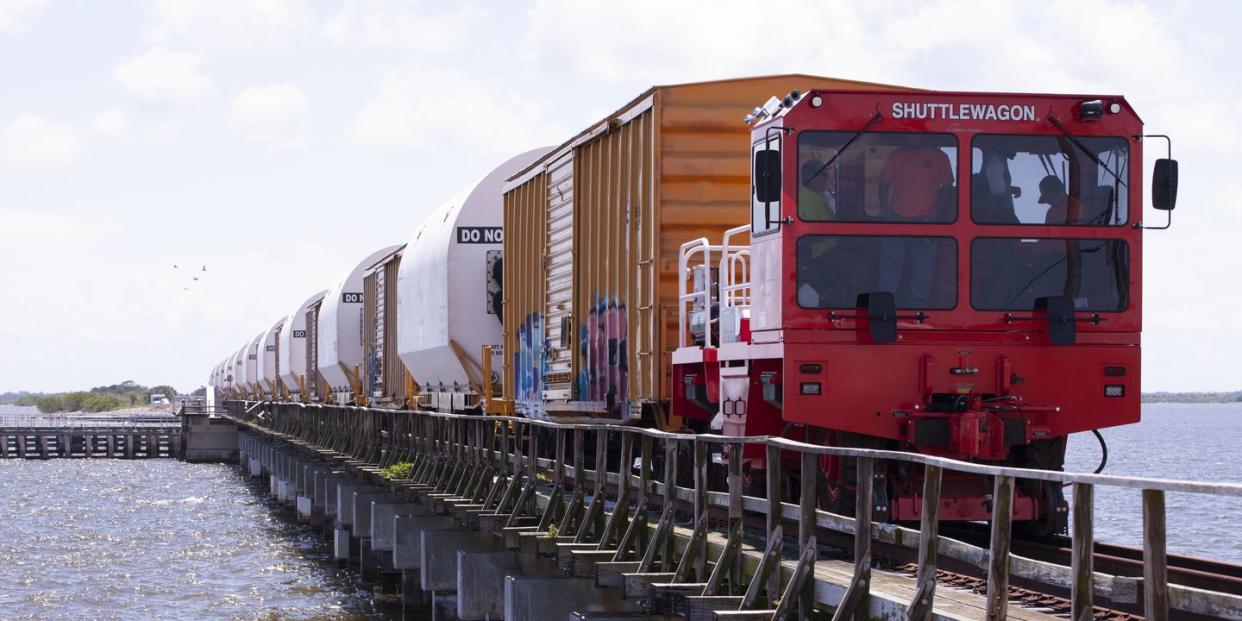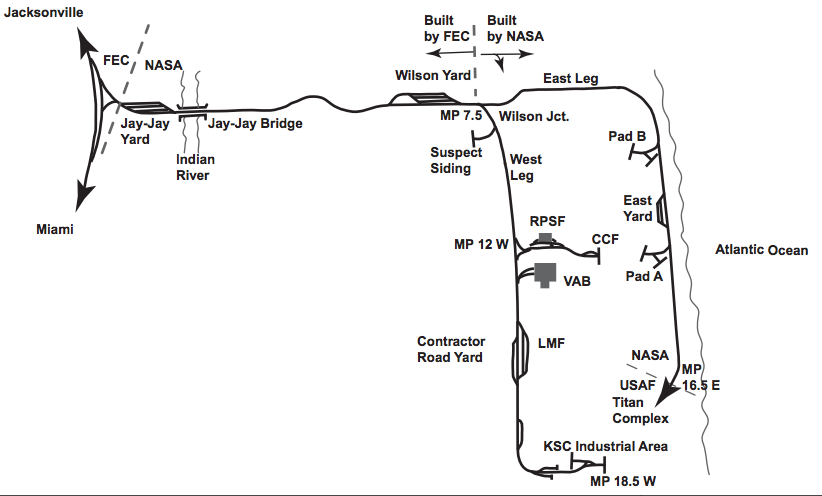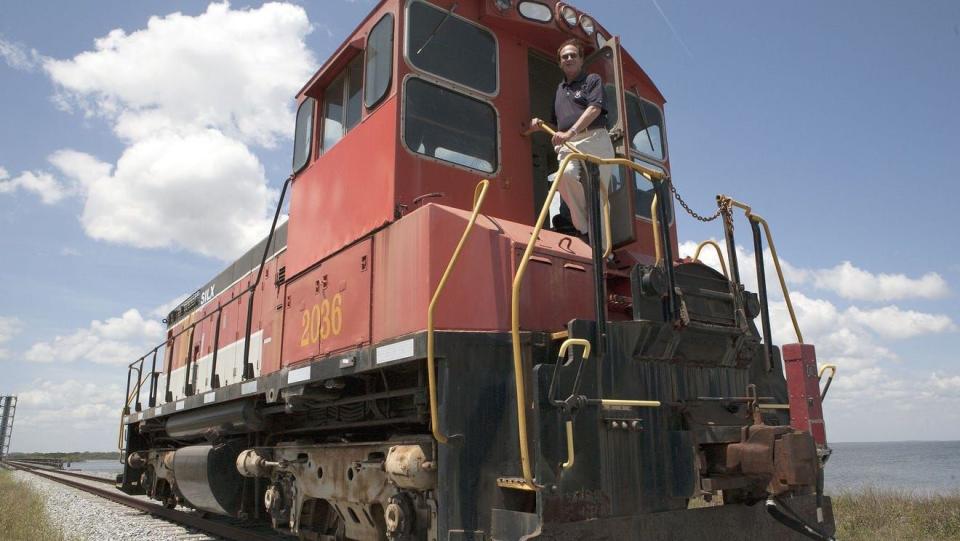NASA's Famous Rocket Railroad Is Back in Business

The boosters for NASA's Space Launch System arrived at Kennedy Space Center on June 12.
It's the first time NASA has booted up its storied railroad in 10 years.
Built in the 1960s, the NASA Railroad has played an important role in many historic missions.
NASA's massive SLS rocket and Orion spacecraft recently arrived at NASA's Kennedy Space Center in Cape Canaveral, Florida after a 10-day, cross-country journey from Northrop Grumman's facility in Promontory, Utah. And it arrived in style on the storied NASA Railroad.
The 10-segment rocket booster and its accompanying spacecraft are slated to orbit the moon in the next few years and, eventually, ferry the first woman and next man to the moon in 2024 if the schedule holds. The first test flight of the system, Artemis I, is expected to blast off sometime next year.
“It is good to see booster segments rolling into the Kennedy Space Center,” Mike Bolger, program manager of Exploration Ground Systems, said in a press statement. “The team can’t wait to get started working on the boosters that will send the SLS rocket and Orion spacecraft on the first Artemis mission to the moon.”
The rocket boosters are the first to be slapped on the mobile launcher. Now that the segments have arrived, a team will offload them and begin assembly and integration. The core stage of the SLS rocket, meanwhile, is currently at NASA's Stennis Space Center in Mississippi. Later this year, after a Green Run test, it will be shipped to Kennedy Space Center via a giant barge.
Each of the 180-ton booster segments were loaded onto souped-up railcars for their journey across the country. It's the first time in 10 years that NASA has shuttled rocket parts along its 38-mile industrial short line in Central Florida.
The Midnight Train to Florida

As the space race took off in the 1960s, NASA's Kennedy Space Center partnered with Florida East Coast Rail (FEC) to construct track that would be used to shuttle rocket parts across its sprawling campus. In 1965, the agency joined 28 miles of its newly built track to the FEC's recently constructed 7.5-mile track at Wilson's Corners junction, according to the Southeastern Railway Museum. FEC also constructed two rail yards, Jay Jay Yard and Wilson Yard, to park unused locomotives.
Before rocket-filled rail cars slip into NASA's restricted zone, they have to cross a half-mile-long drawbridge spanning the Indian River. The 9-mile-long East Leg of the NASA Railroad connects to launch pads 39A and 39B along the coast. The West Leg, also 9 miles long, connects to an industrial complex and the agency's Vehicle Assembly Building.
In the first 5 years of operation, the railroad delivered 30,000 carloads of material to help construct the massive crawlway connecting the VAB to the launch pads, according to the Southeastern Railway Museum. It took 56 railroad cars to transport the propellant needed to fuel the famed Saturn V rocket. The railroad, per the museum, was also integral in ferrying Apollo astronauts to "the sandpile," a lunar testing ground.

In 1983, NASA purchased the 7.5-mile stretch of FEC railway in order to upgrade it for the burgeoning shuttle program. Throughout its rich history, the NASA Railroad has transported a number of specialized locomotives including three World War II-era ex-U.S Army Alco S2 locomotives, purchased in the 1970s, and three EMD SW-1500 locomotives, which NASA acquired in the 1980s.
During the Space Shuttle era, NASA used the line to transport rocket booster segments from the Utah facility to NASA's famous launch complex along the Atlantic coast. The boosters traveled across stretches of railway owned by Union Pacific Railroad, Kansas City Southern, Norfolk Southern Railway, CSX Transportation and, of course, Florida East Coast Railway.
In 2014, NASA sent its "NASA red"-painted locomotive no. 2. to the Gold Coast Railroad Museum in Miami, according to USA Today. A year later, the agency donated locomotives no. 1 and 3 to the Natchitoches Parish Port in Natchitoches, Louisiana, and Madison Railroad in Madison, Indiana, respectively.
With the upcoming Artemis mission, the celebrated railway is back in business.
You Might Also Like

